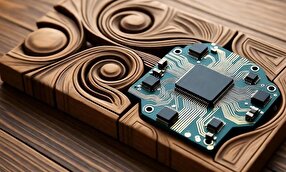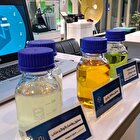Tiny Device Able to Trap, Measure Light Like Never Before

Their hybrid cavity design unlocks new scientific frontiers, from quantum tech to material science, the journal Light: Science & Applications reported.
Scientists from the Fritz Haber Institute of the Max Planck Society and the Helmholtz Center Dresden-Rossendorf have developed an innovative experimental platform to measure the electric fields of light trapped between two mirrors with sub-cycle precision. Using electro-optic Fabry-Pérot resonators, this approach enables precise control and observation of light-matter interactions, especially in the terahertz (THz) spectral range.
By designing a tunable hybrid cavity and mapping its complex sets of allowed modes, researchers can selectively position measurement points at the nodes or maxima of light waves—exactly where needed. This breakthrough paves the way for new discoveries in quantum electrodynamics and the ultrafast manipulation of material properties.
Physicists have made a major breakthrough in cavity electrodynamics by developing a new method to measure electric fields inside optical cavities. Using electro-optic Fabry-Pérot resonators, they have achieved sub-cycle timescale measurements, enabling them to observe light and matter interactions at the exact point where they occur.
Cavity electrodynamics studies how materials positioned between mirrors interact with light, influencing their properties and behavior. This research focuses on the terahertz (THz) spectral range, where low-energy excitations determine fundamental material characteristics. By measuring new states that exhibit both light and matter properties within the cavity, scientists gain a deeper understanding of these interactions.
To refine their measurements, researchers developed a hybrid cavity featuring a tunable air gap and a split detector crystal. This innovative design provides precise control over internal reflections, allowing for the selective creation of interference patterns on demand. Supported by mathematical models, these observations help unravel complex cavity dispersion, offering deeper insights into the physics of light-matter interactions.
This research lays the groundwork for future studies in cavity light-matter interactions, offering potential applications for quantum computing, material science, and beyond.
Michael S. Spencer, first author of the study noted, “Our work opens new possibilities for exploring and steering the fundamental interactions between light and matter, providing a unique toolset for future scientific discoveries.” Prof. Dr. Sebastian Maehrlein, the leader of the research group, summarizes, “Our EOCs provide a highly-accurate field-resolved view, inspiring novel pathways for cavity quantum electrodynamics in experiment and theory.”
4155/v





















